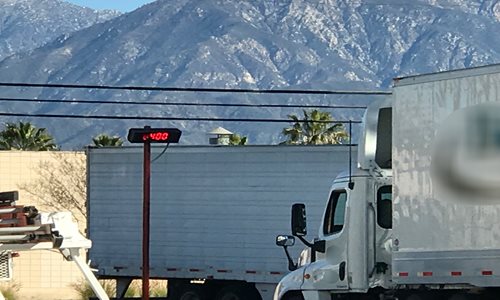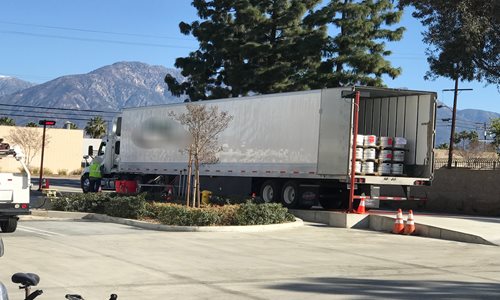Leaking wheel seals, flat tires and lights being out are often things that lead to drawing unwanted attention to you while running through an open scale house. Though these are strong “red flags” to the DOT, no single thing is sure to draw more attention than rolling over their scale overweight! As drivers we get a feel for our trucks and trailers, especially if we stay hooked to the same combination all the time, which often gives us a sort of “sixth sense” as to whether we are overweight in some way when being loaded. This “Spidey Sense” of sorts was tingling this week for me after witnessing a shipper chronically overloading trucks and realizing where the load weight was proportioned in my truck after they finished.

While loading an “adult beverage” load recently this week, I witnessed a couple trucks loaded out in front of me go over the customer's on-site scale overweight, both on gross and axles. This was due to the irregular sizes of packaging and pallet configuration being loaded. That sneaking suspicion grew increasingly strong when I was given the green light and pulled away from the dock to close my doors. What I saw when I did was a full 2,000+ pound pallet of double-stacked beer kegs loaded past the 48-foot mark inside my dry van, on a 45,000 pound load. After asking to use their scale, my suspicion was confirmed by weighing in 1,250 pounds over on the trailer tandems. This seemed to be the norm at this particular shipper, as you can see here in the picture of a truck scaled just in front of mine who had a couple heavy pallets past the 48-foot mark inside his trailer on just as heavy of a load! Although you can't see the number on the scale in this picture, he was 3,400 pounds over gross, even with a daycab!

There are some tricks I have both learned and picked up along the way throughout the years that I use to help my “overweight radar” become a little more honed:
- If you’re unsure and the load is over 30,000 pounds, scale it!
- If the load is over 35,000 and there are pallets past the 48-foot mark inside the trailer, scale it!
- If the shipper has an on-site scale, regardless of weight, scale it!
- If the truck drive axle airbag gauge is over 61 (differs by truck, so test it by scaling and mark it), scale it!
- Tires look overly saggy but are fully inflated, scale it!
- Last, but not least, when in doubt at anytime for any reason…SCALE IT!
Not to be redundant, but the only true way to make sure your weights are proportionately loaded is to scale it out at a certified public truck scale. Of course the go-to name in the business is CAT Scale and is the one I try and use every time if I can. When the re-work took 1.5 hours I was asked “Why didn’t I just take it as it was and chance it?” My answer without missing a beat was, “You weren’t going to pay my fine, were you?” Make sure to C.Y.A. and when in doubt, scale it out!